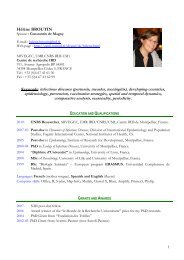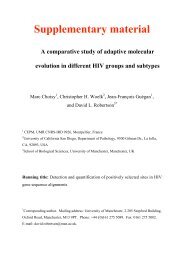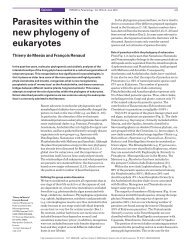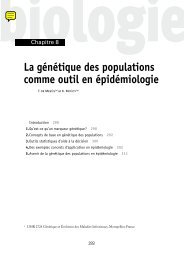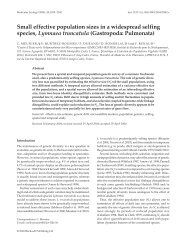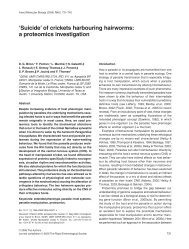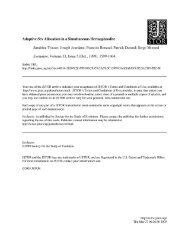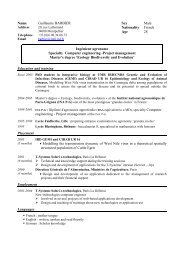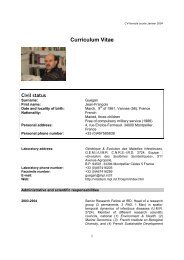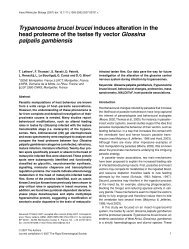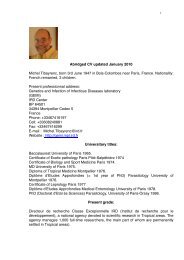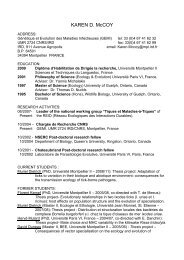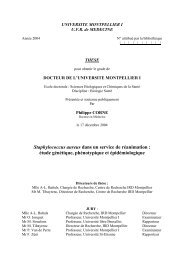écologie des virus influenza aviaires en Camargue - IRD
écologie des virus influenza aviaires en Camargue - IRD
écologie des virus influenza aviaires en Camargue - IRD
You also want an ePaper? Increase the reach of your titles
YUMPU automatically turns print PDFs into web optimized ePapers that Google loves.
Chapitre IIIAbstractBackground: Since its detection in 1996, the highly pathog<strong>en</strong>ic (HP) H5N1 avian <strong>influ<strong>en</strong>za</strong><strong>virus</strong> (AIV) has led to a proliferation of studies, mostly focused on pathog<strong>en</strong>icity, the g<strong>en</strong>eticbasis of virul<strong>en</strong>ce and the evolution of the subtype's g<strong>en</strong>ome. Our understanding ofecological factors which favor the emerg<strong>en</strong>ce and maint<strong>en</strong>ance of such HP <strong>virus</strong>es is howeverstill limited. Rec<strong>en</strong>t surveillance of wild populations in fact reported a virtual abs<strong>en</strong>ce of HPH5N1, or insignificant levels of circulation, ev<strong>en</strong> in southeastern Asia where the <strong>virus</strong> isnow <strong>en</strong>demic in domestic birds.Discussion: While low pathog<strong>en</strong>ic (LP) AIV persist and evolve in wild populations, HP AIVevolve in domestic birds, where they can cause economically serious epizootics that onlyoccasionally spill back into wild populations, g<strong>en</strong>erally causing high mortality in infectedbirds. Here, we argue that evolutionary ecology considerations can explain this appar<strong>en</strong>tparadox. Host structure (e.g. d<strong>en</strong>sity, inter and intraspecies g<strong>en</strong>etic diversity) andtransmission possibilities differ considerably betwe<strong>en</strong> wild and domestic birds and are likelyto be the main determinants of virul<strong>en</strong>ce selection. Because viral fitness is highly dep<strong>en</strong>d<strong>en</strong>tof host survival and dispersion in nature, it is unlikely that virul<strong>en</strong>t forms will persist in wildpopulations if they kill hosts quickly and/or affect host predation risk or migratoryperformance. Finally, <strong>virus</strong> shedding (excretion via oropharyngeal versus fecal routes) andviral persist<strong>en</strong>ce in water suggest differ<strong>en</strong>tial transmission strategies betwe<strong>en</strong> low and highlypathog<strong>en</strong>ic AIV.Summary: Human activities artificially shape AIV evolutionary ecology and select for traits(high virul<strong>en</strong>ce, host specialisation, etc.) that confer optimal fitness under artificialconditions. Prediction and control of AIV emerg<strong>en</strong>ce urg<strong>en</strong>tly need to consider host ecology122



